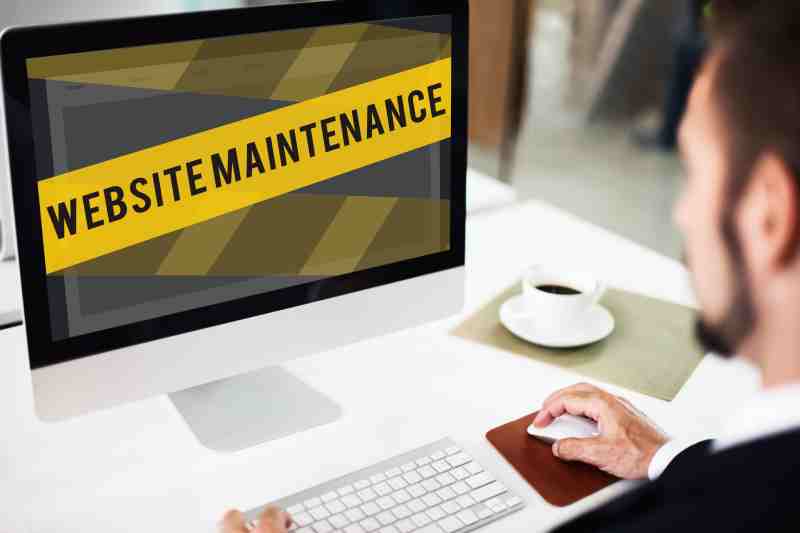In today’s digital landscape, your website isn’t just an address – it’s the digital storefront where customer relationships get built.
However, hackers treat unprotected websites like unlocked doors; cybercriminals actively prowl for vulnerabilities to access financial data, deface brand assets, or plant ransomware that halts your operations.
When breaches strike, three core pillars collapse: financial stability evaporates, reputational damage stains credibility, and user trust fractures irreparably – consequences no modern business can absorb.
Website security emerges as your fundamental safeguard here, like bulletproof glass at that crucial storefront, it protects against threats targeting your most critical business elements:
- Your brand’s digital presence
- Consumer confidence metrics
- Operational continuity
To fortify your online assets effectively, we’ve organized a clear action path through our website security essentials framework, starting with the non-negotiable foundation every marketing leader must implement first.
Establish Foundational Safeguards for Your Website
Outdated software becomes an open invitation to cybercriminals. Research shows that vulnerabilities in ageing website tools account for breach entry points. By maintaining current systems, you’ll effectively close these security gaps and keep hackers out. Staying current with updates acts as a first-line defense against malware injection and data theft.
The SSL/TLS certificate remains non-negotiable for modern sites. Without this digital shield, you might as well publish confidential user data publicly in a town square. This security workhorse encrypts all browser-website communications; think of HTTPS as an armored van securing sensitive information in transit.
The impact extends beyond protection – your website gains trust credibility through the padlock symbol while improving Google visibility. In our SEO-first landscape, these dual wins make encryption essential for digital strategy.
Explore free solutions like Let’s Encrypt through your hosting service. Most major providers simplify this installation – one simple call could activate HTTPS security this week. Cybercriminals don’t pause. Therefore, software and plugin upkeep deserve equivalent focus. Unpatched systems create risk faster than forgotten leftovers create mold in office fridges.
Enable automatic updates for WordPress or Shopify platforms – set this once, then rest assured you’re covered. For plugins: activate “minor updates only” if you fear functionality changes, while never skipping critical security releases.
With encryption and updates locking technical weak spots, we’ll next focus on human gatekeeping through smart password protocols and role-based controls.
Your Core Checklist for Access Control
Controlling who can access your website’s backend is a cornerstone of your website security essentials. Think of these safeguards as digital gatekeepers that protect your marketing assets while enabling effective team collaboration.
1. Enforce a Strong Password Policy: A strong password policy is your first line of defense; hence, it fortifies both Admin Panels and User Accounts against unauthorized entry. You need to implement two-factor authentication (2FA), which adds an extra layer of security by requiring a secondary verification—like an access code sent to a smartphone—before granting system entry. To make this easier, empower your team with password managers: these tools create and store complex, random strings of characters for each login.
2. Assign User Permissions Wisely: This is where User Permission Management comes into play. You should limit administrative exposure by assigning roles strategically. For example, Administrator-level privileges are powerful and should be reserved for trusted senior staff, not freelancers or junior team members. Instead, use defined roles:
Editors: Can publish and manage posts, including those from other users.
Contributors: Can write and manage their own posts, but cannot publish them.
This separation prevents simple mistakes from causing major security issues or data leaks.
3. Defend Against Brute-Force Attacks: Brute-force attacks use automated bots to launch thousands of login attempts with common passwords. Therefore, you need to thwart their cycle with login throttling tools. These tools automatically block devices that make several consecutive unsuccessful login attempts, effectively shutting down the attack.
Now that you’ve tightened your digital front door’s security, we’ll address the vital maintenance and backup procedures that keep your website resilient against threats that might bypass these defenses.

Build a Proactive Defense and Recovery Plan
You might think website security is a one-time checkbox – it’s time to flip that script. True protection requires Continuous Vigilance through scheduled safeguards, not just initial setups that gather digital dust.
Imagine Regular Website Backups as your business continuity insurance policy. These digital safety nets let you hit reset after a Security Breach, wiping malware-infested code through full system restoration before Data Loss cripples operations.
There’s a catch, however – storing these backups on your live server resembles hiding spare keys under a doormat during a break-in. Always upload them to External Storage, like cloud drives, where criminals can’t reach. Why? Because ransomware attacks now target backup files, too. Separate storage ensures you retain uncompromised data even if attackers breach primary servers.
Regular Security Scans. These proactive health checks identify vulnerabilities before hackers exploit them. Think of this as preventative dental care for your website – catching cavities (malware) before they become root canals.
Malware Scanning doesn’t just remove digital plaque. Left unchecked, malicious code can:
- Vandalize your brand’s online storefront with offensive content
- Pirate customer payment details into dark web spreadsheets
- Sabotage servers until your site becomes unsearchable
Make maintenance manageable with this simple triage system:
- Automate website backups: Enable daily cloud-synced snapshots through your host platform.
- Isolate backup files: Google Drive/OneDrive beats server folders every time.
- Run weekly security scans: Free tools provide basic malware checks within minutes.
By establishing these Website Security Essentials protocols, you transform crisis management into predictable prevention – the digital equivalent of weatherproofing before storm season hits.
Also Read: Keeping Your Digital Doors Open: The Value of Routine Website Maintenance
Make Continuous Security a Standard Practice
Website security isn’t a checklist item you complete once; it’s an ongoing commitment that demands your attention long-term. Hackers constantly evolve their tactics; hence, relying solely on static protection methods could leave gaping vulnerabilities within weeks.
At the heart of this challenge lies Proactive Security – implementing Web Security Best Practices through daily vigilance rather than reactive scrambling. This disciplined approach doesn’t just safeguard sensitive client data; ultimately, it preserves the trust that fuels your brand’s digital success.
Start today by auditing your current protections against this article’s Website Security Essentials – that padlock icon should mark the beginning of your journey, not the final destination.









Leave a Reply
You must be logged in to post a comment.